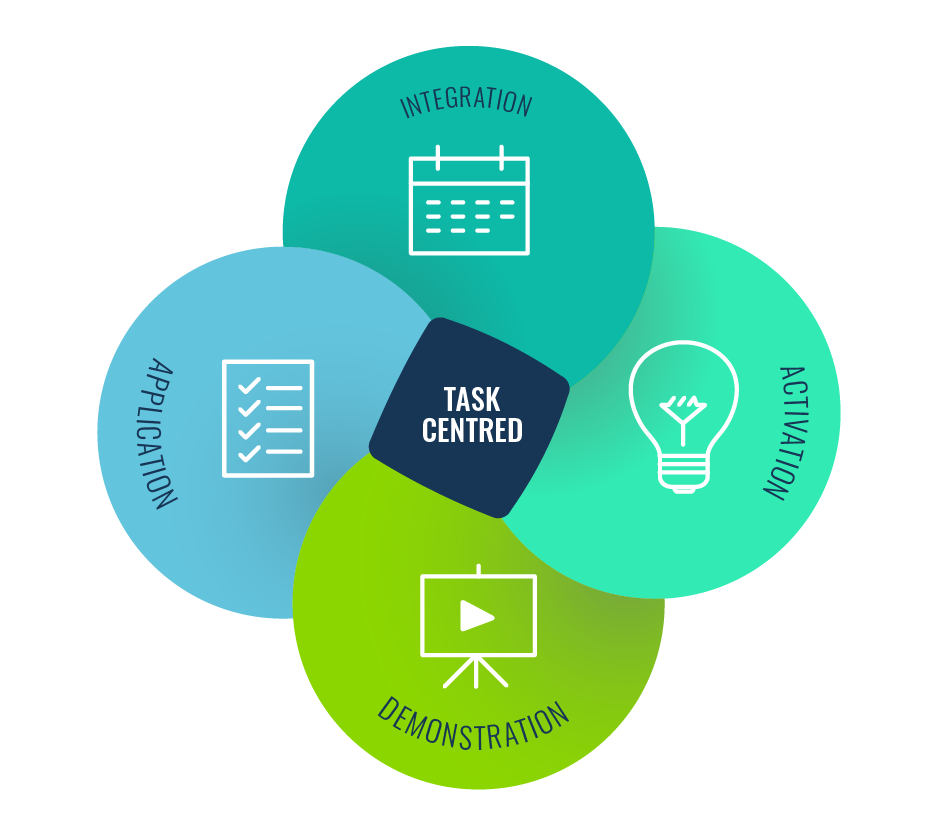Design of CALL Applications
Computer-Assisted Language Learning (CALL) is an interdisciplinary field that merges pedagogy with technology. As a result, discussions on CALL often revolve around these two perspectives: pedagogical theories and technological implementations. A comprehensive understanding of CALL necessitates an exploration of both theoretical frameworks and practical methodologies.
The Pedagogy Behind CALL
From a pedagogical standpoint, M. David Merrill (2007) synthesizes fundamental principles for effective instructional design. Merrill identifies a four-phase cycle—activation, demonstration, application, and integration—that should be iterated as necessary to address different learning problems or tasks. According to Merrill, effective instruction involves activating prior knowledge, demonstrating new concepts through concrete examples, providing opportunities for application, and integrating new skills into real-world scenarios.

First Principles of Instruction
With the advancement of technology, artificial intelligence (AI) and large language models have been increasingly applied in CALL. Weng and Chiu's systematic review (2023) examines the integration of Merrill’s First Principles of Instruction (FPI) within Intelligent Computer-Assisted Language Learning (ICALL) environments. Analyzing 83 empirical studies from major educational research databases, they highlight how FPI principles enhance learning outcomes in ICALL. The review finds that demonstration and application principles are most commonly utilized for automatic feedback, while activation supports intelligent tutoring. Additionally, problem-centered and integration principles play crucial roles in personalization. However, challenges remain, particularly in the underutilization of problem-centered and integration principles across ICALL applications. The study concludes that while FPI significantly improves language learning and learners’ affective/psychological states, a more balanced application of all principles is essential for fostering contemporary competencies such as problem-solving and critical thinking.
Technology-Driven Approaches in CALL
On the technological side, Jozef Colpaert's work (2006) marked a significant shift by advocating for a pedagogy-driven design approach. He emphasized that pedagogical requirements should be clearly defined before selecting technological solutions. Colpaert introduced a structured design process based on the ADDIE model (Analysis, Design, Development, Implementation, and Evaluation) , underscoring the necessity of well-defined learning goals, suitable language learning methodologies, and technology that aligns with these pedagogical needs. His research also highlighted the crucial role of teachers as instructional designers, encouraging them to analyze learning situations and develop tailored solutions rather than merely applying generic guidelines.
Building on this foundation, Marek and Wu (2020)proposed a "Standard Model" for CALL instructional design. Their comprehensive framework, informed by extensive meta-analyses of CALL and Mobile-Assisted Language Learning (MALL) literature, identified nine foundational concepts essential for effective CALL environments. These include reverse engineering instructional requirements from outcome goals, affordance-based design, constructivism through student-centered learning, communicative language teaching (CLT), authentic learning materials, incremental learning, task-based design, gamification, and long-term curriculum integration. By grounding CALL practices in well-established theories and empirical research, this model provides a structured framework for both instructional and research design, ensuring that technology supports effective pedagogy rather than dictating it.
In sum, the effective design of CALL applications requires a balanced integration of pedagogical theories and technological advancements. By leveraging instructional design principles and ensuring that technology serves pedagogical goals rather than the other way around, CALL can enhance language learning outcomes in meaningful and impactful ways.
H5P DEMO Click the link to try excercises based on H5P technologies.